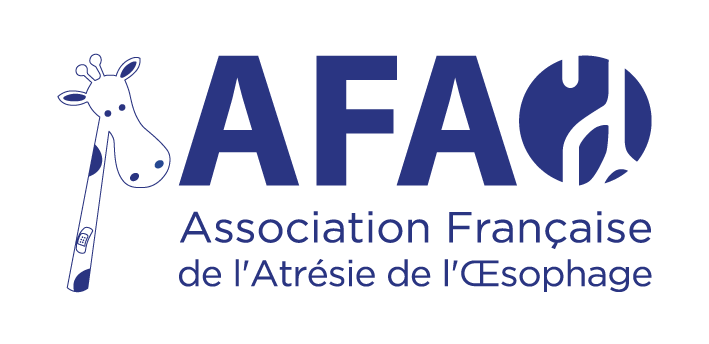Prix AFAO-COVIDIEN 2009
Titre du projet récompensé : Remplacement oesophagien par ingénierie tissulaire : utilisation d’une matrice extracellulaire ensemencée de cellules autologues appliquée au remplacement d’oesophage cervical chez le porc
En partenariat avec COVIDIEN-France, L’AFAO a remis 15 000 euros en juin 2009 au Dr Gaujoux Sébastien pour soutenir ce projet.
Responsable du projet : Gaujoux Sébastien
Composition de l’équipe de recherche
POGHOSYAN Tigran, interne en Chirurgie
GAUJOUX Sébastien, interne en Chirurgie
CATTAN Pierre, Professeur des Universités, Praticien Hospitalier
LARGHERO Jérôme, MCU-PH
PRAT Frédéric, Professeur des Universités, Praticien Hospitalier
BRUNEVAL Patrick, Professeur des Universités, Praticien Hospitalier
ARMANET Mathieu, post-doctorant
CLAVEL Laurent, statisticien
Résumé du projet
En raison de l’importante morbi-mortalité et des résultats fonctionnels imparfaits du remplacement œsophagien par gastroplastie ou coloplastie, nous avons choisi de préparer un substitut oesophagien à base de matrice extracellulaire ensemencée par des cellules autologues, qui devrait permettre d’obtenir un néo-œsophage perméable et fonctionnel.
Objectifs
Évaluer chez le porc le succès du remplacement circonférentiel de l’oesophage cervical par une matrice extracellulaire et déterminer le rôle et l’intérêt d’un co-ensemencement de cette matrice préalablement à la greffe par des progéniteurs musculaires (myoblastes) et des cellules épithéliales autologues.
Méthodologie
Vingt porcs de race mini-pig seront implantés avec une matrice extracellulaire acellulaire (Surgisis®, COOK), ensemencée ou non de myoblastes et cellules épithéliales autologues. L’implant tubulisé, cellularisé ou non, fera l’objet d’une maturation in vivo par implantation dans le grand épiploon de l’animal. La greffe consistera à remplacer 4 cm d’œsophage cervical par le substitut ainsi pédiculisé sur le grand épiploon. Les deux anastomoses seront protégées par une endoprothèse œsophagienne couverte extractible (Polyflex®-Boston Scientific). L’endoprothèse sera retirée par voie endoscopique au 1er mois. Le succès de la procédure sera défini comme la survie de l’animal à 3 mois, sans endoprothèse et sans sténose oesophagienne. À partir du 3ème mois, les animaux seront sacrifiés séquentiellement sur une période de 12 mois et la zone de greffe fera l’objet d’une analyse structurelle et cellulaire par immunohistochimie.
Résultats attendus
Le succès du remplacement oesophagien par une matrice extracellulaire tubulisée et ayant fait l’objet d’une maturation dans le grand épiploon sera évalué par la survie des animaux 3 mois après la greffe, sans endoprothèse oesophagienne et sans sténose de la zone de greffe. Si cette technique s’avérait être un succès, elle pourrait constituer une alternative intéressante aux procédés classiques de remplacement de l’œsophage dans le cadre des pathologies bénignes, malignes ou congénitales de l’œsophage.
Abstract:
Oesophageal reconstruction by gastroplasty or coloplasty carries a high morbidity and mortality rates with often disappointing functional results. In response, a research program on oesophageal tissue engineering was developed. Following preliminary results obtained by our group in cervical oesophageal replacement by aortic allograft in the pig (one-month survival: 66%, systematic stenosis occurrence after prosthesis withdrawal), we designed a novel oesophagus replacement by combining extracellular matrix scaffold and autologous cells.
Objectives:
1. Evaluation of the success potential of segmental and circumferential oesophageal reconstruction with extracellular matrix in a porcine model.
2. Determination of the suitability of matrix seeding with autologous cells, such as muscular progenitors (myoblats) and epithelial cells.
3. Further understanding of the mechanisms underlying tissue regeneration in this model.
Methodology
Twenty minipigs will be divided into 2 groups and implanted with either extracellular matrix alone (Surgisis®, COOK) or extracellular matrix seeded with autologous myoblasts and epithelial cells isolated from muscle and jugal biopsies, and cultivated 21 days before extracellular matrix seeding. Tubulised matrix will then mature for 21 days into the great hometum, used as a bioreactor. The substitute will be grafted in replacement of 4 cm of cervical oesophagus. The anastomoses will be protected by an esophageal extractible stent (Polyflex®-Boston Scientific), with realimentation started on postoperative day 1. Stent will be extracted during endoscopy at the first month. In case of secondary oesophageal stenosis, a new sent will be implanted. The success of the procedure will be defined by pig survival at 3 months, without the need for stenting or without occurrence of a stenosis. From the third month, animals will be sequentially sacrificed during 12 months and structural and immunohistochemical analysis of the graft will be performed.
Results an perspectives
We believe that the use of this extracellular matrix will yield better results, generating less fibrotic stenosis in particular, because of improved biocompatibility. Seeding of the matrix with autologous myoblasts should accelerate the reconstruction of a complete oesophageal wall, including muscle. Epithelial cells could have a trophic and protective role. A successful implementation of this technique would provide an alternative to classic oesophageal reconstruction techniques in benign, malignant or congenital diseases. The first application could be oesophageal reconstruction in patients exclusively fed with jejunostomy after failure of all standard techniques. This technique could then be used in cases of oesophageal atresia with long gap.

